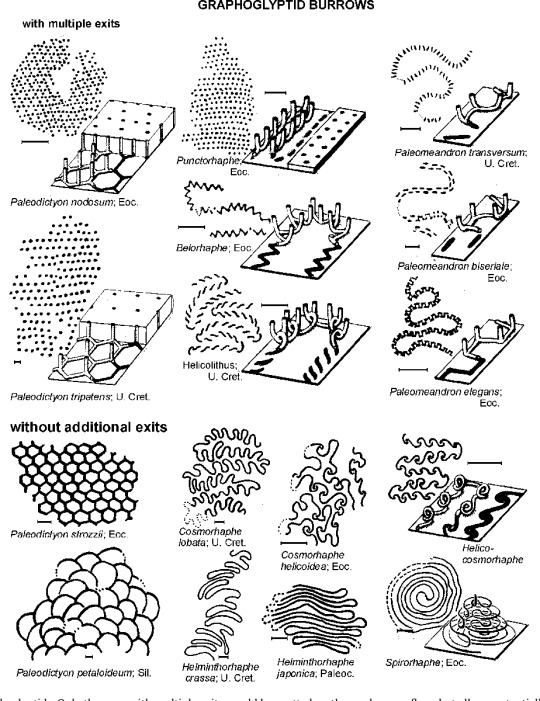#Trace fossil
Explore tagged Tumblr posts
Text
…… He noted that trackways often show multiple species that lived together at the same time, and can reveal other information. This new trackway also shows that wide, squat ankylosaurs — sometimes described as being coffee-table-like — had a surprisingly bird-like gait, lining up left and right feet like "supermodels on a runway." He added, "This track record shows us the coffee table analogy is a little bit flawed." On the other hand, he acknowledged, there is one drawback of footprints compared to bones. "The obvious question is: What do these animals look like? All we have are the feet."
#text#ruopodosaurus#trace fossil#palaeontology#Canada#fossil trackway#i found the last sentences amusing
37 notes
·
View notes
Text
Tiny mussel imprints








Sometimes I wonder how many tiny fossils, imprints of mussel or brachiopode we missing around in all the pieces of rocks, or rock matrix.
Meistens hier typisch Feuerstein Flint, brüchige gespaltene Scherben mit kleinen Muschelabrücke, teils mit Schalenmuster, aber keine art Bruch muschelig. Teils kristallisierte.

#fossil collecting#flint fossil#mussel fossil#fossils#fossils in germany#geology#fossil hunting#trace fossil
49 notes
·
View notes
Text
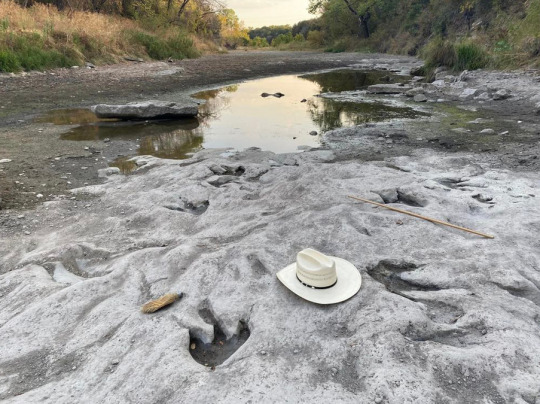
[ Some of the approximately 75 dinosaur tracks discovered at the site. Photo courtesy of Paul Baker / Friends of Dinosaur Valley State Park. ]
"Drought has dried up part of a river in central Texas, revealing 113-million-year-old dinosaur tracks. The prehistoric footprints emerged at Dinosaur Valley State Park, which is located in the town of Glen Rose, southwest of the Dallas-Fort Worth area. As the name suggests, the park already protects other dinosaur footprints. But the tracks that recently emerged are usually hidden under the mud, silt and waters of the Paluxy River. This summer, however, water levels have dipped so low that the prehistoric indentations are now visible. So far, volunteers have counted 75 newly exposed footprints in the parched riverbed. “It has been another very hot, very dry year, so our researchers are trying to take advantage of the drought,” says park superintendent Jeff Davis to the Dallas Morning News’ Sarah Bahari. Two different types of dinosaurs likely made the footprints, according to park officials. One was Acrocanthosaurus, a 15-foot-tall carnivore that weighed approximately 14,000 pounds. As the gargantuan reptile walked around the area on two legs, it left behind the outline of its three-toed feet. The other was Sauroposeidon proteles, which has been the official state dinosaur of Texas since 2009. This long-necked behemoth may have measured up to 100 feet long and weighed closer to 88,000 pounds. It left behind larger, bulbous-shaped tracks that are similar to elephant footprints."
Read more: "Drought Reveals 113-Million-Year-Old Dinosaur Tracks in Texas" by Sarah Kuta.
#palaeoblr#Dinosaur Valley State Park#Texas#Acrocanthosaurus#Sauroposeidon#Dinosaurs#Cretaceous#Mesozoic#Prehistoric#Extinct#Theropod#Sauropod#Sauroposeidon proteles#Trace fossil#Article#Photo
292 notes
·
View notes
Text

Fossilized camel footprints at a secret location in Death Valley National Park. These are probably somewhere between 10 and 15 million years old.
#geology#california#deathvalley#fossils#death valley geology#death valley#eastern california#california desert#trace fossil
60 notes
·
View notes
Text
#2784 - Ophiomorpha

Another ichnofossil, thought to be a crustacean burrow. They're generally smooth inside, and lumpy outside, where the sediment was packed in tight to support the burrow. They date as far back as the early Permian (298mya).
Unlike Zoophycos, Ophiomorpha is usually found in rocks that form from sand off beachs and in tidal sandflats, although some have been found in turbidite layers where those turbidites were well-oxygenated. We can only presume that the Zoophycos organisms are much more tolerant of low oxygen levels than Ophiomorpha. Other ichnofossils from the same near-shore rocks include Skolithos, Arenicolites, and Diplocraterion. In fact that assemblage of four ichnospecies is called the Skolithos ichnofacies, and is used to infer a shallow-water paleoenvironment.
University of Otago Geology Museum, Dunedin, Aotearoa New Zealand
2 notes
·
View notes
Photo
What's the name of the dessert that looks like this rock?
That's been bugging me for years.

Pleistocene piddock bore holes
Monterey formation shale from Farm Center, Carmel Valley, CA
To help support the preservation of our collection click here.
18 notes
·
View notes
Text

ex hard coal mine, coal coke production site – essen, germany // 08-2022
© 2022 waidwund–photo
#photographers on tumblr#original photographers#industrial#structural change#fossil phase out#architecture#coal mine#waidwund photo#traces of human life#josch schlegel#ruhrgebiet#ruhrpott#zeche zollverein#strukturwandel
72 notes
·
View notes
Text
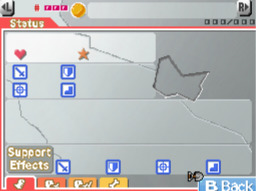

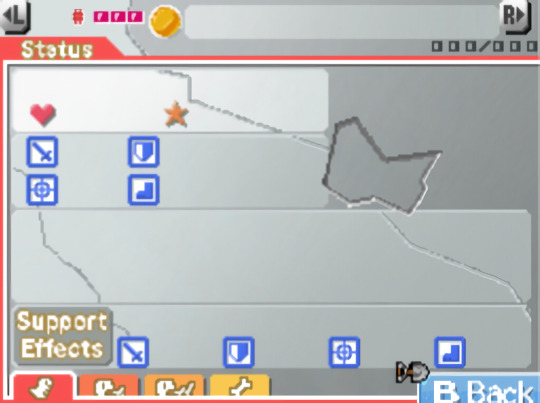
hello fossil fighters nation, i present: blank FF1 vivosaur stat pages of varying sizes!
i may get to the attack pages as well, depending on my patience :']
#it hails#my art#fossil fighters#these aren't rips from the game i just traced everything 1:1 with a 1px brush on my phone. so the patience is very needed
129 notes
·
View notes
Text
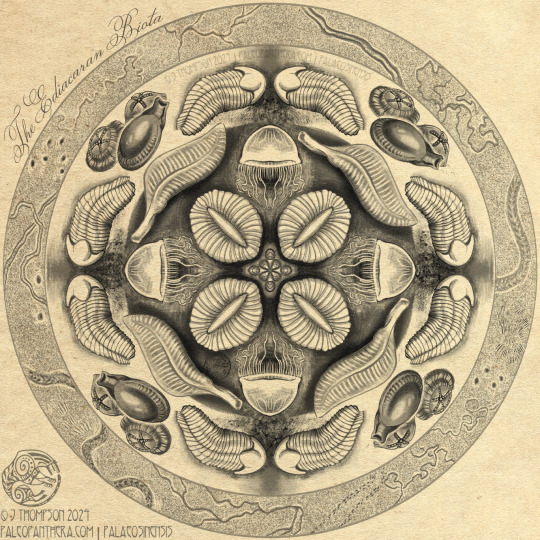
Alright science art and paleo art folks go gentle on me. If I was to do these for a gallery showing I think I'd need at least a couple of weeks for research and notes alone. More if I reached out to researchers for paper access and feedback. Speculative armored invertebrates, Dickinsonia, speculative medusa, Charnia, Spriggina, Kimberella, Arkarua, & their trace fossils.
#ancient life#fossil#fossils#ediacaran#science art#paleo art#dickinsonia#charnia#spriggina#kimberella#arkarua#trace fossils#art#drawing#digital art#illustration#palaeosinensis#paleo panthera#paleopanthera#mandala#pencil#digital pencil#reconstruction#paleoart#paleontology#prehistoric#prehistoric animals#animals#ancient
81 notes
·
View notes
Text
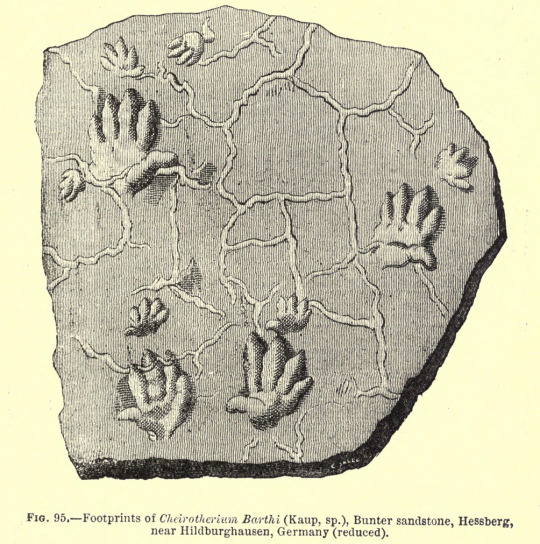
Footprints attributed to ichnotaxon Cheirotherium barthi from A Guide to the Fossil Reptiles and Fishes in the Department of Geology and Paleontology in the British Museum (Natural History), 1896.
24 notes
·
View notes
Note
Hello? Taps mic. The hero of Time is a fossil because his story is so old and long dead that the shape of his corpse has been filled in with sediment and calcified it and the now people can only guess what manner of creature he used to be by the shape of his bones. I can't put the words into the story but I read a book about how in ancient Greece farmers would find mammoth bones and call them bones of giants. the bones discovered in a place with many thunderstorms were called giants, who fell in battle against Zeus. people knew and questioned the stories but they still called them gods. was that boy a hero? did he really abandon their world? hello bee? i feel like you'd appreciate this crumb without the story. i don't know what to do with it but its fun to toss around in my head. he's old. he's time. he is bones in the shape of a huddled child, but his form is so strange to us we called him a warrior, a beast, a giant, anything but a small thing huddled in the ground long ago. I'm not like babying Time the grown man, I'm thinking the story of him. Wind’s idea of The Hero of Time and the Guy that we call Time are not the same person, ok? Taps mic. Like is this thing on? Can you hear me?

oh my god. im starting a new word document

#the idea of. THE IDEA OF#SCHOLARS IN WINDS ERA TRYING TO WORK BACKWARDS WITH THE LEGEND OF THE HERO OF TIME#WITHOUT KNOWING THE SPECIFICS THAT HAVE BEEN LOST TO HISTORY#WITHOUT BELIEVING TRULY IN TIME TRAVEL#AND YET THE TRACKS THEY FIND... THE FOSSIL FOOTPRINTS... THE WAY THEY LOOP AND DOUBLE AND DISAPPEAR#IT SUGGESTS TIME TRAVEL MUST TRULY HAVE BEEN REAL. ONCE#HERE THERE WERE DRAGONS. ONCE.#THE CHAIN GET TO A MUSEUM AND THERES ALL THIS SPECULATION ABOUT WHAT THESE PRINTS MEAN WHAT THESE BONES MEAN WHAT THE CULTURAL SIGNIFICANCE#OF THE GOLD AND THE PUNCTURED EYE WAS; THE TATTOOS COPIED AND TRACED THROUGH THE GENERATIONS#UNTIL THEY HAVE BEEN WARPED INTO MYTH#even beyond just the hero of time as a changeling god. can u imagine the chain finish a battle and skip forward in history by a few#centuries to camp in that same spot#ruins gone. and then can you imagine them skipping further forward into a digsite. its the biggest archaeological find of the decade.#footprints and weapons and long-decayed biological material. the evidence of a battle. the battle they fought. the battle the archaeologist#and anthropologists are trying to piece back together to discover what happened. to put together an image of what life looked like. back#then. back in the days of heroes#and its so rare and so thrilling a find because theyve mapped out where each hero lived in history and yet evidence of them in other#impossible times keeps cropping up!!!!!!#like this battle. a battle with evidence that it was fought by not one but MULTIPLE heroes. the scientists are buzzing. here is real#evidence that the gods had powers that todays world can only dream of. TIME TRAVEL. there is no other explanation. what must these heroes#have been like? huge and powerful and fearsome#and the chain try to blend into this unfamiliar world as best they can#seeing their own footprints fossilised on the ground. an uncovered lump of metal being treated like an irreplacable treasure when its#literally just one of wild's used arrowheads#and THEN. and THEN. they go through another portal further into the future still. and its all in a museum. their footsteps. their lives. th#glorious incorrect speculation of their journeys. its so wrong theyre almost tempted to reveal themselves to correct the historians#but they are revered here. revered and not understood. mythologised. they are ancients#their possessions glow under electric lights in display cases.#HELLO. TURNS THE SPEAKER ALL THE WAY UP#YUJA YOU ARE COOKING HERE!!!!!!!!!!!!!!!!! THIS IS SOOOO GOOD!!!!!!!!!!!!!!! OH MY GODDDDDDDD
13 notes
·
View notes
Text
The first sand gravel Echinoid!!
After the handful of brachiopodenchalk, fragments of polished round corals & the belemnite on the gravel beds and sand. 🛤️




Also found this piece with the imprint, not certainly sure if it is from brachiopode shell or an ammonite. It looks alike like an typical famous UK pyrite ammonite. But here ???
But that means all of the ten thousand of fragmented rocks 🪨 on the entire railroad tracks on my area and beyond since the construction works from last summer could be have some fragmented parts of their imprints.
Would be cool but then it means over 8 miles along of an 🚞🛤️ track too check up…….. shit.


Also was greeted with a lot of snails 🐌 on the track of the railroads back from work, two today, yesterday were a lot others in brown out.
We had Weinbergschnecken commonly many here long ago, the past years awful barely seen any of them but now plenty of an new population after the showers of raining.
#fossil collecting#geology#fossils in germany#fossils 2025#trace fossil#echinoid#pyrite ammonite#snails#Weinbergschnecke
2 notes
·
View notes
Text

[ Photo by Driss Ourhache. ]
"New research on fossil footprints preserved high in the Atlas Mountains suggests that dinosaurs of all shapes and sizes lived together during the Middle to Late Jurassic around 168 to 160 million years ago. However, skeletal fossils from this period are extremely rare, and are known from just four species including the unusual Spicomellus afer. The discovery of three new tracksites suggests that there could be many more dinosaurs yet to be discovered in Morocco, and North Africa more widely, opening a new window into a time when dinosaurs were at their peak. Ahmed Oussou, a PhD student and the study’s lead author, says, ‘So far, fieldwork undertaken in this region has not yet yielded any bones, making it difficult to link the tracks to any given species of dinosaur.’ ‘While the quantity of tracks in the area does not necessarily mean that the region is rich in body fossils, I hope that further excavations will allow me and my colleagues to find some bones in the coming years.’ The findings of the study, which was co-authored by Natural History Museum researcher Dr Susannah Maidment, were published in the journal Royal Society Open Science."
Read more: "Discovery of Moroccan fossil footprints points to unknown dinosaur diversity" by James Ashworth.
#palaeoblr#Palaeontology#Paleontology#Morocco#Trace fossil#Dinosaurs#Mesozoic#Jurassic#Prehistoric#Extinct#Article#Photo#Information
111 notes
·
View notes
Text

mutuals meet me in the dry creek bed to look for cool rocks
14 notes
·
View notes
Text
youtube
Zoophycos is a trace fossil - that means it wasn't part of an organism but is a distrubance in the sediments caused by the organism. An example would be burrowing tunnels. In this case it is a grazing trace left as the creature ate away organic-rich sediments. The creature would burrow down to find the choicest beds and then spiral outwards eating all the godies as it went. All that is left is the rasping marks in a radiating or spiral pattern. The bed this one is in must have been particularly rich as teher were 4 or 5 of these in a couple of square metres. You can find these fossils all over Guedalest town in the paving stones, which is surprising since they tend to favour more clay-rich marly sediments which don't normally make good paving stones.
0 notes

